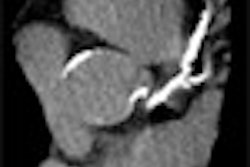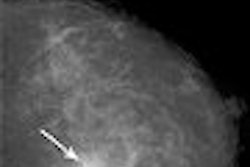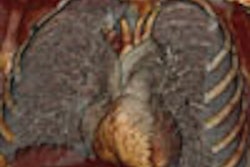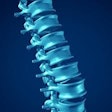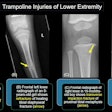The severity and progression of hip osteoarthritis (OA) is currently measured on x-ray by assessing the joint space width (JSW) and joint space narrowing (JSN). But what is the optimal number of radiographs and readers necessary to achieved accurate results? European researchers answered those questions and found that less is more, according to their study in Arthritis Research & Therapy.
For this study, Dr. Emmanuel Maheu and colleagues obtained hip radiographs from ERADIAS, an ongoing randomized, three-year multicenter trial on the effect of soy in OA. Maheu is from Hôpital Saint-Antoine in Paris. His co-authors are from various institutions in France and London.
The patients (ages 45-75) had symptomatic hip OA with a manually measured JSW of 1-4 mm at baseline on plain anterioposterior (AP) x-ray. From this dataset, 50 radiographs were selected and stratified into those with a baseline JSW less than 2.5 mm and those with a JSW of 2.5 mm or greater.
The patients, who were imaged in a weight-bearing position, had pelvic x-rays performed with 15 ± 5° internal rotation of the feet and at 0.7 mSv. For hip AP views, the same foot rotation was used but the x-ray beam was fluoroscopically directed at the joint space. The radiation exposure for the latter was 0.3 mSv. Finally, oblique views were obtained at an exposure rate of 0.3 mSv. The JSW of the hip joint was measured at the narrowest point for each view.
Two trained readers, Maheu and co-author Dr. Christian Cadet, read each set of radiographs twice with a 15-day break in between. All six views for each patient were read at the same time, with 10 sets of radiographs covered in each session. In total, 300 x-rays were read twice.
"Our findings did not reveal significant differences between the ability of the different views to measure JSW reliably," the authors concluded. "Any of the three views could be used in a structural evaluation in hip OA because they yielded almost the same precision in assessment of JSW and the joint space change." In addition, "a single reader was superior to the combination of two" (Arthritis Research & Therapy, October 2005, Vol. 7:6, pp. R1375-R1385).
Using the intraclass correlation coefficient (ICC) to judge interobserver variability, the researchers found that ICC values were 0.80 for the pelvic view, 0.88 for the target hip AP view, and 0.72 for the target hip oblique view. The ICC values for intraobserver variability were equally high, they wrote, although ultimately, interobserver reproducibility was less accurate than intraobserver variability.
With regard to sensitivity to change over time, the standardized response mean (SRM) values were also high, ranging from 0.61 (pelvic view, reader 1) to 0.82 (pelvic view, reader 2).
"The present study shows that the precision of the measure is more dependent on the precision of the readers than on the radiographic view selected," Maheu's group wrote. "Either pelvic or hip AP view seems a good choice, offering a good reliability in measuring either JSW on a single view or joint space changes over time in pairs of radiographs."
In patients with joint space change, a combination of views (either pelvic or hip with oblique) would be better for assessing structural modification, the group added.
Information from this current study could prove useful for designing studies that look at the efficacy of structure-modifying drugs in hip OA, the authors stated, also noting that studies are still needed that would compare manual versus digitized joint space measurements.
By Shalmali Pal
AuntMinnie.com staff writer
December 9, 2005
Related Reading
High selenium levels associated with reduced risk of osteoarthritis, November 16, 2005
NSAID may accelerate osteoarthritis, November 11, 2005
Bone densitometry stays strong with new advances, November 11, 2005
Copyright © 2005 AuntMinnie.com




